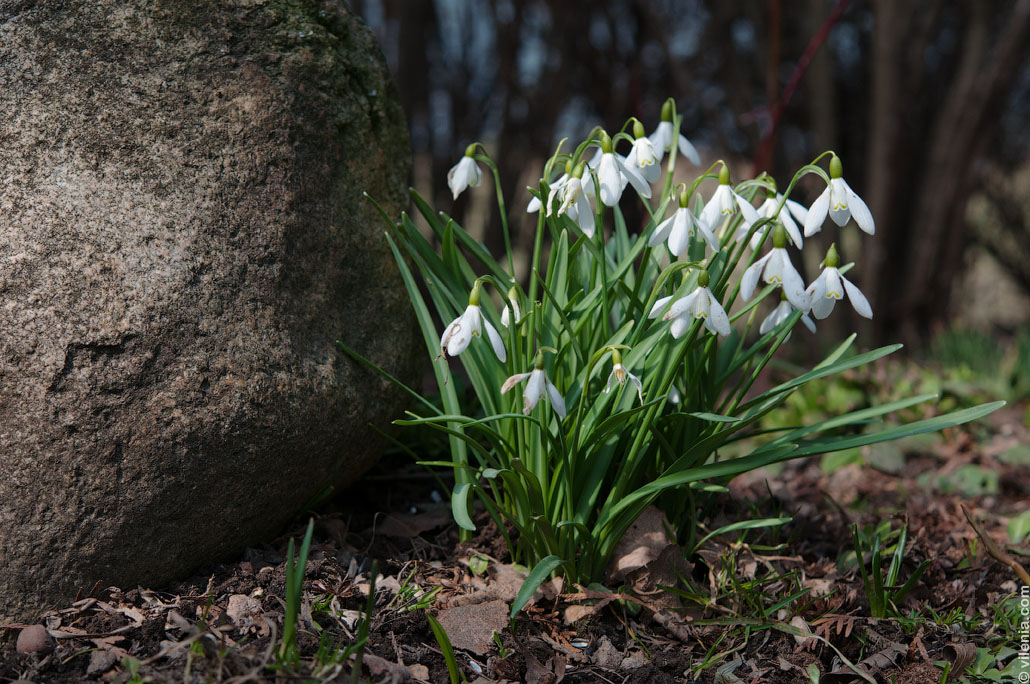
Perennial early spring flowers. Spring in the forest. Primroses - Green Hands
Primroses are beautiful spring flowers
, the most long-awaited. Fragile and bloom for a very short time, but how much joy primroses bring! Photos of these lovely flowers.
I am pleased to continue a series of photo articles about beautiful spring flowers. Earlier, I already laid out collections of photos of beautiful spring flowers:, and. Today I will talk about those flowers that were not included in the previous series: snowdrops, blueberries, daffodils, hyacinths, liverwort, periwinkle, primrose and others.
primroses traditionally are the most long-awaited creations of nature. As soon as the snow melts, these delicate spring flowers appear. They only seem fragile, but in fact are full of vitality to withstand snow and frost. The monotonous white winter is replaced by these bright color spots.
As a rule, primroses are unpretentious plants, and they can be bred in their garden plots. In early spring, when the trees are not yet covered with foliage, usually shady places are still actively illuminated by the sun. They are best suited for primroses.
2.
3.
4.
5-6. On the right in the photo is bright blue blueberry or scylla, on which a bumblebee has already attached itself. The homeland of the blueberry is the south of the European part of Russia, the Crimea, the Caucasus, Central and Southern Europe. The height of the blueberry reaches 10 cm, blooms in mid-April - early May. 

7.
8.
9.
10.
11.
12.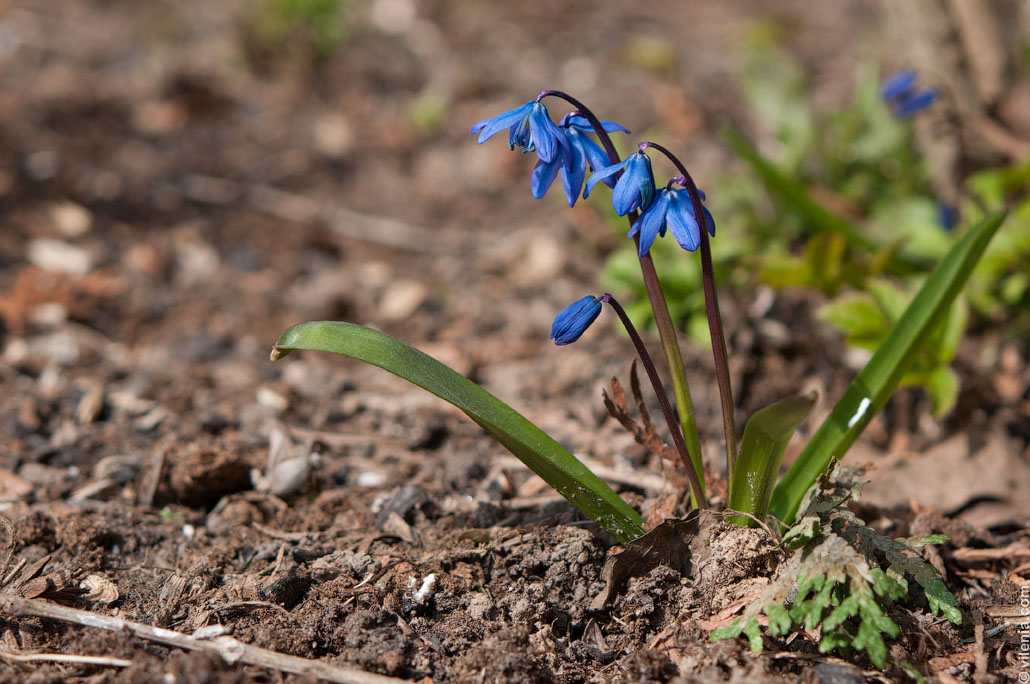
13. Baby blue liverwort, which is also called a coppice because it does not like open places. Lush bouquets of the liverwort can be found in the forest. 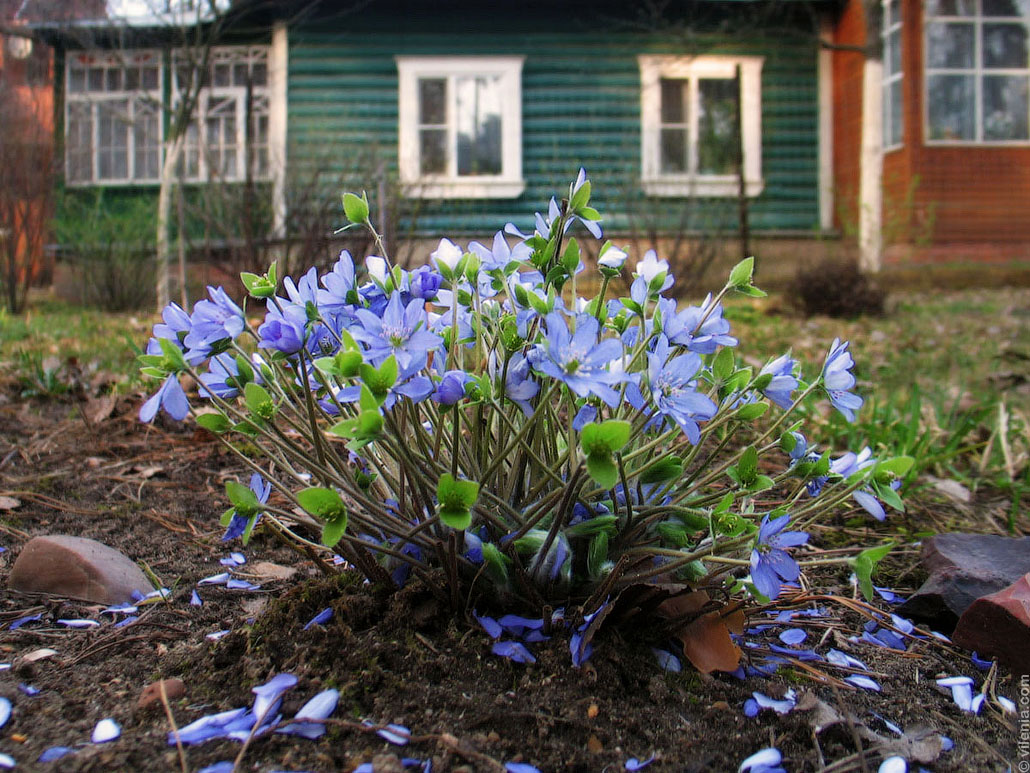
14. The liverwort owes its name to belief. It says that these plants help with liver diseases, as the three-lobed leaves resemble it in their shape. In the Middle Ages, it was believed that appearance plants can determine for which type of treatment it is suitable. 
15. hyacinths bloom later, along with tulips. And their flowers are no longer so thin and fragile. 
16-17. 

18. Hyacinths are perennial bulbous plants. Already in the fall, the future stem with flowers is laid in the bulb. Hyacinth is a cultivated plant, therefore it requires care. The soil near the hyacinth needs to be loosened, watered and fed. It is recommended to dig up the bulbs after the end of flowering, otherwise it is likely that in the second year they will no longer bloom. Or they will bloom much weaker. 
19-20. Photos of beautiful spring flowers - pink hyacinths. 

21. A legend is associated with hyacinth, rooted in Greek mythology. During the training of a beautiful young man named Hyakinthos (or Hyakinthus from Amicles), with whom the sun god Apollo was in love, the jealous god of the West Wind Zephyr, who was also not indifferent to him, mortally wounded the young man. On the site of the spilled blood of Hyakinthos, a flower grew, which Apollo named after him. 
22. Photos of a spring flower - a simple periwinkle, are pleasing to the eye. But periwinkle widely used in magic by the ancient Celts. It has protective properties and was also called "witch violet". 
23. The leaves of the periwinkle are durable and vital, keeping a fresh look even under the snow. Therefore, the periwinkle is considered to be a symbol of vitality. Today, periwinkle can often be found not only in the forest, but also in gardens and parks. 
24. In China, pink periwinkle is used to treat hypertension. In folk medicine of the Caucasus, it is used as a hemostatic, wound-healing and blood-purifying agent. 
25-26. Next in line are photos of spring daffodils. Narcissus comes from the Greek word “narkao” which means intoxicating. It got its name due to its strong aroma. 

27-28. Narcissus has long been considered a symbol of cold beauty and vanity. The legend about the beautiful young man Narcissus and the nymph Echo in love with him is associated with him, which was reflected in Greek mythology. The legend tells of a stream flowing in the depths of the forest. The waters of this stream were not disturbed by shepherds, birds, or even leaves. After drinking water from a stream, Narcissus fell in love with his reflection in the stream and died, unable to tear himself away from him. After the death of the young man, his body disappeared. Instead, a delicate, fragrant flower grew on the bank of the stream. 

29-30. The ancient Romans greeted the winners with yellow narcissus flowers. 

31. In 1570, a daffodil was sent from Constantinople as a gift to the Lord of the Treasury of England. He began to grow in a garden on the banks of the Thames. And today, the narcissus is the most beloved flower of the British, to which even the rose is inferior. 
32-33. Today there are more than 3,000 varieties of daffodils in various shapes and combinations of white, yellow and orange flowers. In garden plots, you can grow both natural species and their hybrids. 

34.
35. In Prussia, daffodils were a symbol of a happy marriage. A girl who was getting married would take the flower away from her parents' house and take care of it, because it was believed that the happiness of the new family depended on it. 
36.
37-38. 

39.
40.
41.
42. Photos of bright yellow daffodils give a sunny mood all year round! 
43.
44. But this miracle is a photograph of the solar mimosa, which has long become a symbol of women's holiday on March 8. 
45-46. The real name of mimosa is silver acacia, which is an evergreen tree about 10 meters high. Mimosa blooms in late winter - early spring. 

47. And this even row of pink hearts belongs to a plant called dicentra.
48. There is also a legend about this flower. A young girl Jeannette got lost in the woods. After some time, she met a young man who helped her find her way. The girl fell in love with him and tried to find the young man, but to no avail. And then one day she met a rich procession, at the head of which was the same young man with another girl. Jeanette fell dead, and her heart sprouted a dark red flower. 
49. The name of the dicentra plant comes from the Greek words 'dis' twice and 'kentron' spur. The photo clearly shows the forked corolla of the flower. 
50. daisies belongs to the perennial plants of the Astrov family. Daisies have an interesting property - they feel the weather. Before the rain approaches, the flower closes and leans towards the ground. 
51.
52. In the photo - primrose or primrose spring, also called keys for its resemblance to a bunch of old keys. There was a belief that a girl who managed to find a primrose at Easter would find her betrothed this year. Even in the days of the Celts, primrose was part of the love drink. 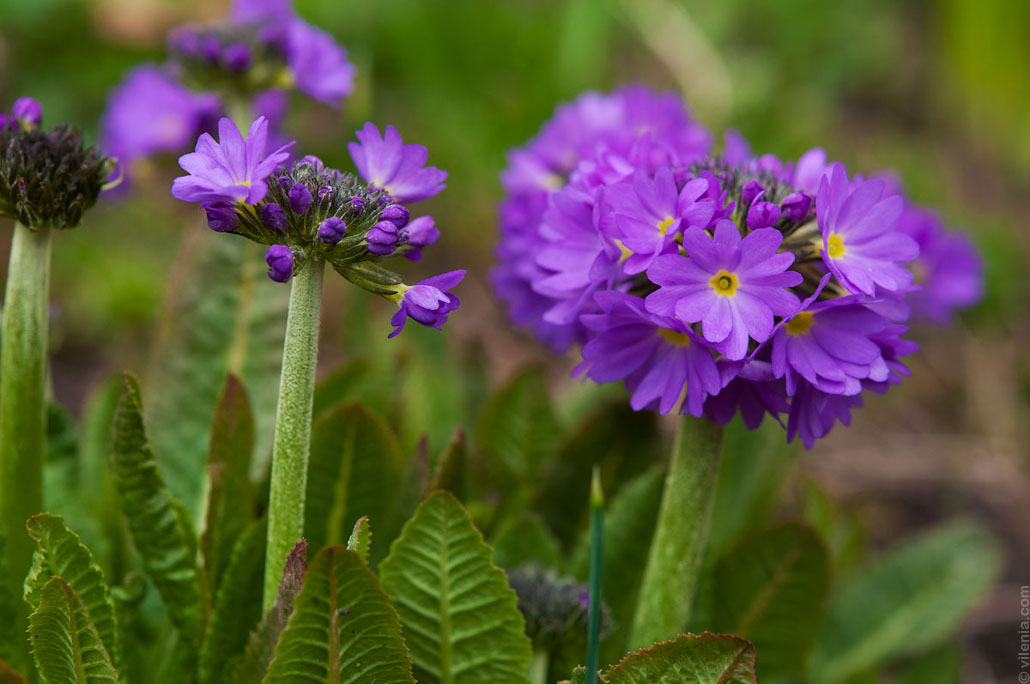
53.
54.
55.
56.
57. Something I only show photos of spring flowers. But at the beginning of spring we rejoice at everyone green leaf.
58.
59. And not only green. For example, peony sprouts- Red. 
60-61. Left - first lily sprout also has a reddish tint. 

62. Familiar to us asparagus- this young shoots of asparagus. Asparagus can be safely called the most spring vegetable. For example, among the Germans, the appearance of young asparagus on the shelves of stores symbolizes the beginning of spring. Asparagus contains a lot of vitamins and minerals, so asparagus sprouts have long been considered a useful dietary product. 
63. swollen chestnut buds a, from which a stately candle of a peduncle is about to appear. 
64.
65-66. On the right in the photo - an elegant bud lily of the valley. About them there will be a separate story. 
67-68. On the left is the same chestnut, only a couple of weeks later with already opened flowers. And on the right - tiny flowers veronica belonging to the Plantain family. 

69. First tulip sprouts.
70. Here the tulips already have large rosettes of leaves. 
71. And whimsical buckwheat sprout full of vitality. 
72. In addition to buckwheat and sorrel, the buckwheat family also includes rhubarb. Outwardly, it resembles burdock, but its petioles are very useful. The use of rhubarb strengthens the heart and prevents the occurrence of cardiovascular diseases. In the photo - the first spring shoots of rhubarb. 
73. Meanwhile, in the forest on sunny glades blooms blueberry.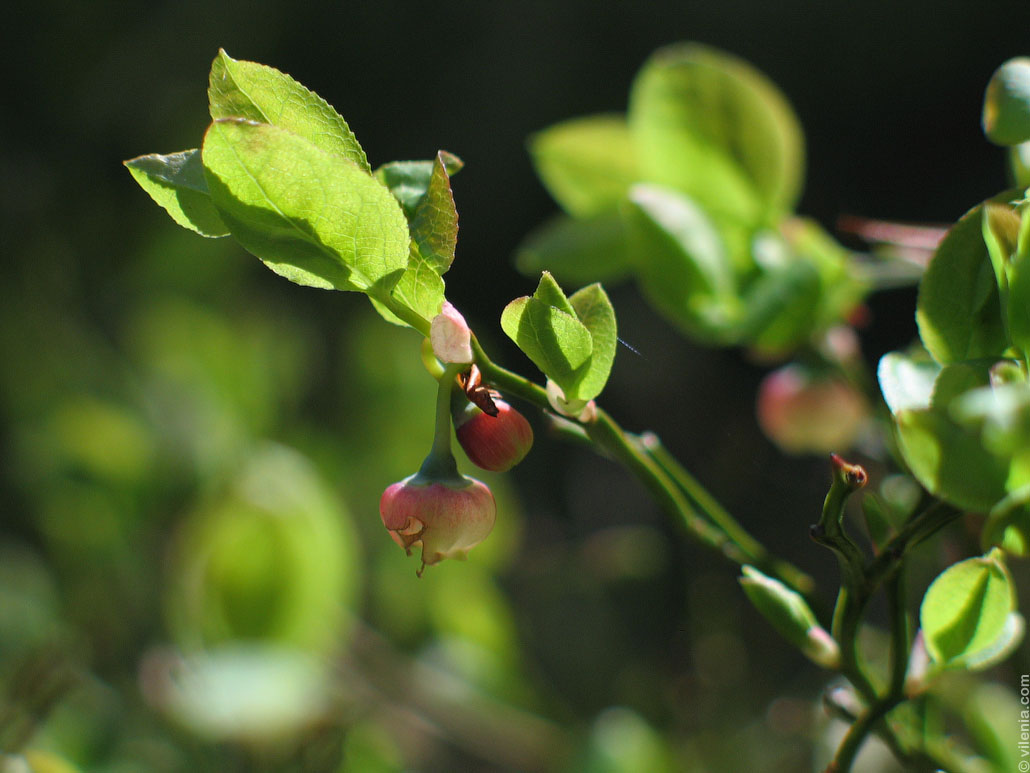
74. In the gardens preparing for flowering currant.
75-76. On the left in the photo - young fir cone. On the right is a close-up of hyacinth buds, shining like pearls are hidden on the petals. 

77-78. The photographs show another beautiful spring primrose - muscar or mouse hyacinth. Most often found blue flowers Muscara, but they also come in other colors: purple, white, purple, yellow. 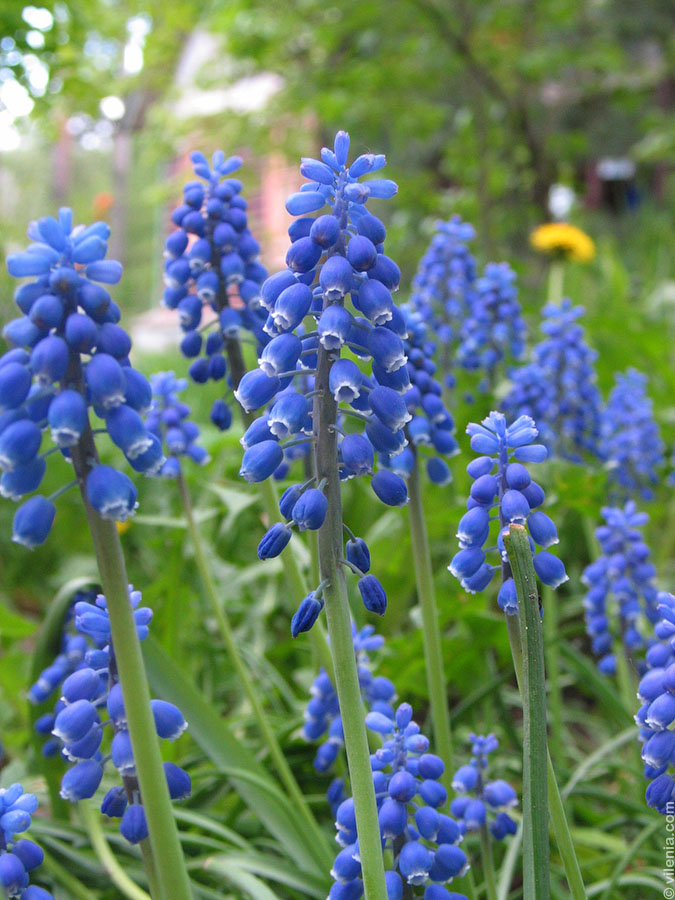
![]()
79. 
80. 
81. Modest forget-me-nots. Many nations have their own legend dedicated to this spring flower. One of them tells about the walk of lovers along the river. The girl saw a beautiful blue flower on the edge of a steep bank. The young man climbed down to pluck it, but could not resist and fell into the river, having only time to shout: “Do not forget me!” 
82. 
83. Modest Flowers coltsfoot, similar to small suns, appear among the first. A decoction of coltsfoot is traditionally used as an expectorant and anti-inflammatory agent for all diseases of the upper respiratory tract. 
84-85. 

86. Fluffy kidneys willow or willow are symbols of spring. Crushed willow buds were used in healing decoctions for the treatment of wounds, added to bread. Willow was also considered a symbol of courage and courage, so the young men made talismans from willow buds. 
87. And in conclusion, solar dandelion fields.
88. In spring, fluffy yellow carpets of dandelions delight the eye. 
89. Dandelion has long been used in folk medicine as a diuretic and expectorant, as well as in the treatment of atherosclerosis, liver diseases, kidney stones and gall bladder.
Small overview
When the snow begins to melt in the fields and forests, the time comes for the first spring flowers. We call them by the common word "primroses". Many of them bloom in some European latitudes as early as February - even where snow is now rarely seen :) We are also interested in them because they can also be found in the wild in our cultivated vegetable gardens. To help summer residents I will show a few photos.
Primroses - this is the name of a whole family of plants, the representative of which is Common primrose, or common primrose (lat. Primula vulgaris).
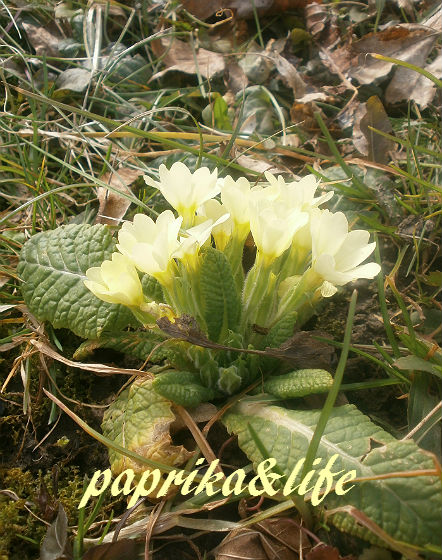
Another primrose:

Spring primrose, or Primrose officinalis, or real primrose, or spring primrose (lat. Prímula véris). Photo: Wikipedia
In some regions, any first spring flowers are called "snowdrops", but according to botanical nomenclature, the "correct" snowdrop looks like this:

Snowdrop, or Galanthus (lat. Galanthus). There are several species of this plant that are poisonous. In the photo - Galanthus nivalis. Photo: Wikipedia
One of the first to bloom is chionodoxa, which is sometimes confused with the Siberian blueberry.

Chionodox (Chionodoxa); Snowman; Snow beauty. Photo: www.weerkust.ru

Siberian spelling (lat. Scilla siberica). Photo: Wikipedia
In some regions, the blueberry is called the liverwort.

Noble liverwort (Hepatica nobilis), or coppice. Poisonous plant. The white flowers next to it are oak anemone (lat. Anémone nemorósa). Care must also be taken when working with it, as with all ranunculus.
And this is another windmill.

Buttercup anemone, or ranunculus anemone, or ranunculus anemone (lat. Anemóne ranunculoides). Poison plant!

It is sometimes confused with another plant from the same family, which is called springweed, but if you look closely, the differences are visible to the naked eye.

Winter erantis, or wintering vesennik, Eranthis hyemalis (see also header photo)
It's bloomed lungwort (Pulmonaria).

And it blooms corydalis (lat.Corýdalis).

This is what it looks like in color:

Corydalis are also considered poisonous. Photo: www.vespabellicosus2008.narod.ru

Goose onion (lat. Gagea)

Common coltsfoot (lat.Tussilago farfara). In this plant, leaves appear later than flowers. Photo: www.vespabellicosus2008.narod.ru
In the wild, you can find both crocus and muscari (mouse hyacinth).

Crocus (lat. Crocus)

Viper onion, or Mouse hyacinth, or Muscari (lat. Muscári). Photo: Wikipedia

Backache (lat. Pulsatilla) blooms later, in some regions called "sleep-grass". Common lumbago is a poisonous plant.
Beautiful flower carpets create different types tenacious and clear, which also bloom a little later than the very first flowers.

Creeping tenacious (Ajuga reptans L.), or dubrovka. Photo: www.files.school-collection.edu.ru

Purple lamb (lat. Lamium purpureum). Yellow flower next to her - clean, which is sometimes confused with marigold.

Spring chistyak, or spring buttercup (lat. Ficaria verna).
And the marigold looks like this and in our gardens it is very, very rare:

Marsh marigold (lat.Caltha palustris). She has only 5 petals; poisonous plant. Photo: Wikipedia
Well, just in case :) Plants that in some latitudes can bloom in January.

Veronica oak (lat. Veronica chamaedrys)

Daisy perennial (lat. Béllis perénnis)
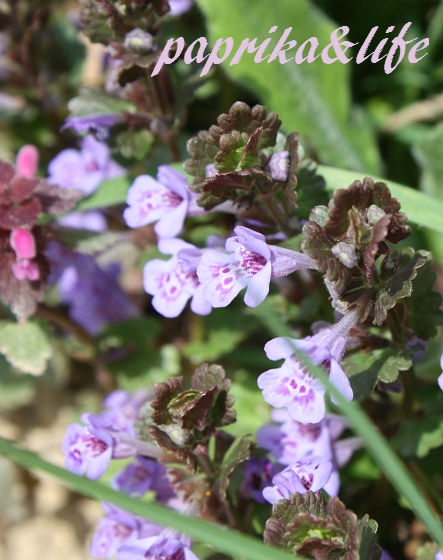
Ivy-shaped Budra, Creeping Budra, (lat. Glechóma hederácea); sometimes called dognip or catnip. The plant has a pleasant aroma, but is also considered poisonous.
I won’t show the dandelion, everyone seems to know it :) Instead, I’ll show the beautiful violet.

Fragrant violet (lat. Viola odorata). The most fragrant primrose! Some reference books consider it a conditionally poisonous plant. *
* "IN contemporary literature Poisonous plants are considered to be those that produce toxic substances (phytotoxins), even in small quantities causing death and damage to the body of humans and animals. However, such a definition contains a certain measure of conventionality. "(B.N. Orlov, D.B. Gelashvili, A.K. Ibragimov. Poisonous animals and plants of the USSR). Most researchers divide such plants into highly poisonous, poisonous and conditionally poisonous.
Primroses are the decoration of spring. If you look closely at these bold flowers, not afraid of cold weather, you will notice how tender and touching they are. They will scatter across the clearing - beauty! And they are not afraid of anything. They know the sun is on their side. And that means something!
What plants do we call primroses?
We call primroses spring flowers that appear when the snow cover has disappeared, or is just beginning to disappear.
There is such a good month called "March". This month pleases us with the baking sun, the azure sky, the first thawed patches. And primroses appear on the thawed patches.
It is known that each type of flower has its own flowering time. Someone likes a hot, elegant summer, someone likes the autumn time, but there are such “brave” flowers that are not afraid of cold weather, these flowers include primroses. Primroses are plants not only in March, but also in other spring months.
List of primroses
Let's call primroses:
- anemone,
- coppice,
- spring primrose (spring primrose),
- mother and stepmother,
- two-leaved scilla,
— adonis,
- corydalis,
- multi-colored brandushka,
- galanthus,
- hellebore,
- Russian hazel grouse,
- crocus,
- ram-keys,
- lungwort and others.
Plants in spring
In spring, changes take place in nature. Daylight hours are getting longer and warmer. Due to what? Due to the fact that the sun in spring more generously pours its golden rays on the earth.
The birth of spring ... From the midday slope of the roofs in the middle of the day it is already dripping. At night, the drop freezes and long ice icicles form. During the day, they thaw again, and droplets of water drip from them. We rejoice in the drop, we believe that it is one of the first signs of spring. It will take a long time before the real spring comes, but no matter how winter fights for its rights, spring will still be established.
Plants wake up in spring. The spring sun does not let them sleep, and they begin to grow. Before the playful spring wind has time to stir up the snow in the forest clearings and hillocks, the first flowers open.
Primrose flowers
What kind beautiful names at the primroses! Delicate, spring, colorful. Some of them close at night, and in the morning, with the first rays of the sun, they open again.
Coppice primrose - the most "starry" spring Flower. Why? Because when you look at it, it seems that little stars have run into one place.
The coltsfoot is the most "sunny" primrose. For what reason? And the flowers of the coltsfoot look like little suns.
Anemone is the most "windy" primrose. From what? Because the flowers sway on thin stems even from quiet gusts of wind.
Scilla is the most "marine" primrose. In connection with what? It’s just that during a generous flowering, a rather large area is filled with “blue splashes”, they merge, forming a “blue sea”.
Take care of primroses! There are not many of them in our forests. Flowers must grow, gain strength, bear fruit. So that in the new season new, strong, beautiful primroses will appear in the same place.
The snow has not melted everywhere yet, but the first spring flowers are already appearing - primroses. Often they are called snowdrops - some flowers appear directly from under the snow, but a snowdrop is a snowdrop, and the first flowers that appear in early spring are called primroses.
In the botanical view, primrose is a genus of plants belonging to the primrose family. It has more than five hundred species and all of them are early spring flowers. The most famous is primrose, the name of the flower is translated like this - “ blooming first". In the people, primroses are called plants, the period of mass flowering of which falls on early spring. We will not understand the botanical wilds, but rather we will select early-flowering plants for the garden. They are very unpretentious in cultivation, and in the spring they will please with the first flowering when other plants are just beginning to awaken.
 Snowdrop. This delicate white flower is familiar to everyone. He is the first to appear on the thawed patches after winter and he is not afraid of either spring frosts or winter frosts nor the snow that fell in the spring. First, a pair of leaves appear, followed by white bells. They love partial shade and require little or no maintenance. Can be planted under trees, shrubs, in flower beds, in containers.
Snowdrop. This delicate white flower is familiar to everyone. He is the first to appear on the thawed patches after winter and he is not afraid of either spring frosts or winter frosts nor the snow that fell in the spring. First, a pair of leaves appear, followed by white bells. They love partial shade and require little or no maintenance. Can be planted under trees, shrubs, in flower beds, in containers.
 Hellebore. A very decorative evergreen plant, valued not only for its large flowers, but also for its beautiful dissected leaves. Can winter under snow, does not freeze even in the most severe winters. It begins to bloom in early spring, flowers appear right from under the snow, which remain on the plant for up to six months. Flowers, depending on the species, are both white and pinkish, with a yellow tint, all shades of red and burgundy, almost to black, but varieties with flowers marked with small specks are especially valued. Hellebore height is from 30 cm to a meter.
Hellebore. A very decorative evergreen plant, valued not only for its large flowers, but also for its beautiful dissected leaves. Can winter under snow, does not freeze even in the most severe winters. It begins to bloom in early spring, flowers appear right from under the snow, which remain on the plant for up to six months. Flowers, depending on the species, are both white and pinkish, with a yellow tint, all shades of red and burgundy, almost to black, but varieties with flowers marked with small specks are especially valued. Hellebore height is from 30 cm to a meter.
 Hyacinth. One of the first to bloom in the garden. It is considered a versatile plant that is suitable for open ground and for early forcing indoors. very fragrant, beautiful flowers Hyacinths come in all sorts of shades and colors - from white to dark purple and even black. At the very beginning of spring, hyacinth leaves appear from the ground in the garden, as if rolled into a tube. They gradually open and a green inflorescence is shown from them, which quickly acquires the color characteristic of the species. The height of the inflorescence is up to 25 cm, and each can have up to thirty flowers.
Hyacinth. One of the first to bloom in the garden. It is considered a versatile plant that is suitable for open ground and for early forcing indoors. very fragrant, beautiful flowers Hyacinths come in all sorts of shades and colors - from white to dark purple and even black. At the very beginning of spring, hyacinth leaves appear from the ground in the garden, as if rolled into a tube. They gradually open and a green inflorescence is shown from them, which quickly acquires the color characteristic of the species. The height of the inflorescence is up to 25 cm, and each can have up to thirty flowers.
Lungwort. The plant is very much appreciated by gardeners for its beauty, unpretentiousness and early flowering. In early spring, the lungwort is covered with many small flowers in the form of bells of white, purple, pale blue, pink, lilac. Often on the same plant there are flowers of different shades - pink and purple - lungworts are easily pollinated among themselves and a variety of color combinations are possible. In height, the lungwort grows up to half a meter and also grows in width. It is better to plant in partial shade or in the shade, where the spotted pattern on the leaves is well manifested, and the flowers become more bright color.
 These are just a few of the primroses. Primula, crocus, backache, narcissus, Kos cyclamen, ranunculus anemone, springweed- all these plants are considered primroses, although they belong to different families. They do not require care and maintenance, you just need to choose the right place in the garden for primroses and they will delight you with bright spring flowers.
These are just a few of the primroses. Primula, crocus, backache, narcissus, Kos cyclamen, ranunculus anemone, springweed- all these plants are considered primroses, although they belong to different families. They do not require care and maintenance, you just need to choose the right place in the garden for primroses and they will delight you with bright spring flowers.